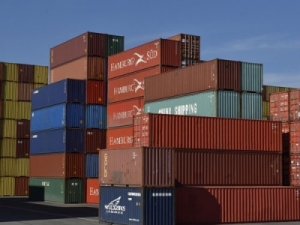Salmonellosis Surge: MPI reports rising cases in New Zealand cattle
Salmonellosis is a serious disease in cattle.
 The strong growth forecast across most sectors and dairy prices expected to gradually increase over the next two years.
The strong growth forecast across most sectors and dairy prices expected to gradually increase over the next two years.
The Ministry for Primary Industries (MPI) says the outlook for New Zealand primary industries is positive.
The strong growth forecast across most sectors and dairy prices expected to gradually increase over the next two years.
MPI Director of Sector Policy, Jarred Mair, says the latest Situation and Outlook for Primary Industries (SOPI) shows that, overall, exports have returned to growth this year – providing a clear signal of the strength of our primary industries.
"New Zealand primary industry export revenue is estimated to reach over $36.7 billion in the year ending June 2016, supported by strong growth in horticulture and other primary sector exports and foods," says Mair.
Recent years have provided challenges for a number of our sectors, and underlined the highly competitive and dynamic markets we trade in.
For some sectors a drop in the New Zealand dollar has softened the impact of lower US dollar prices. Meanwhile on-farm, production across the primary sector has been relatively stable as El Nino conditions did not result in widespread drought.
"The dairy industry has responded decisively to the subdued outlook through consolidation of their businesses to improve productivity and manage their costs," says Mair.
"Dairy prices have remained weak as global supply is still abundant. New Zealand production is down marginally but export volumes are up. Production is still high in the EU [European Union], which is keeping downward pressure on prices.
"Overall there has been a 6% decline in the value of dairy exports in the past year, but an expected gradual price recovery should lead to increasing dairy export values looking out 2 to 3 years. Overall our forecasts show 34% growth out to 2020."
Mair says horticulture exports are expected to continue their run of impressive growth over the medium term.
Horticulture exports exceeded $5 billion for the first time in 2015/16. Kiwifruit exports hit record levels for the year to March 2016, and exports of wine, apples, and pears are increasing due to new plantings reaching maturity. As an example, apple and pear export revenue has doubled since 2012, estimated to reach almost $700 million for the year ending June 2016. Horticulture prices have also increased as New Zealand has maintained its position as a supplier of premium products.
"Strong growth is also being seen in exports of innovative processed foods, honey, live animal, and other products.
"The outlook for the primary sector is supported by industry's significant investments in processing capacity across the country in a range of sectors.
"Free trade agreements will also help grow our exports, while population growth and economic development throughout Asia will support increased demand for New Zealand's protein, horticulture, wood, and fibre products," says Mair.
Federated Farmers says almost 2000 farmers have signed a petition launched this month to urge the Government to step in and provide certainty while the badly broken resource consent system is fixed.
Zespri’s counter-seasonal Zespri Global Supply (ZGS) programme is underway with approximately 33 million trays, or 118,800 tonnes, expected this year from orchards throughout France, Italy, Greece, Korea, and Japan.
Animal owners can help protect life-saving antibiotics from resistant bacteria by keeping their animals healthy, says the New Zealand Veterinary Association.
According to analysis by the Meat Industry Association (MIA), New Zealand red meat exports reached $827 million in October, a 27% increase on the same period last year.
The black and white coat of Holstein- Friesian cows is globally recognised as a symbol of dairy farming and a defining trait of domestic cattle. But until recently, scientists didn’t know which genes were responsible for the Holstein’s spots.
According to the New Zealand Dairy Statistics 2024/25 report, New Zealand dairy farmers are achieving more with fewer cows.